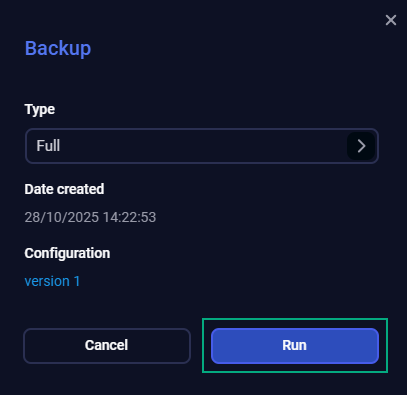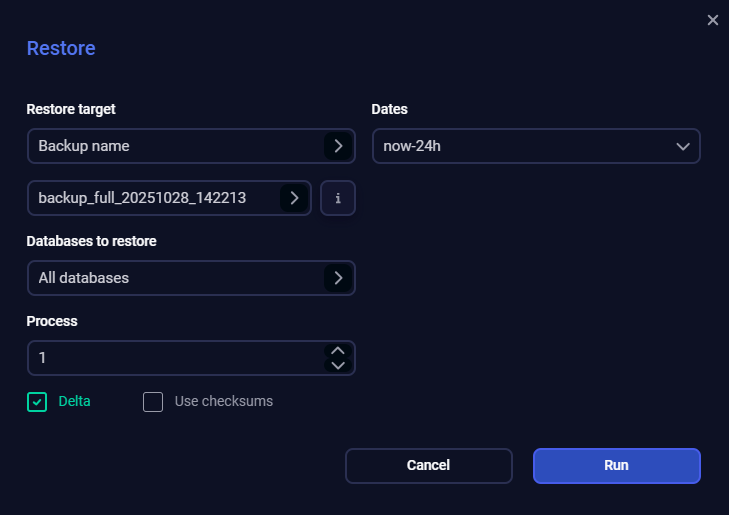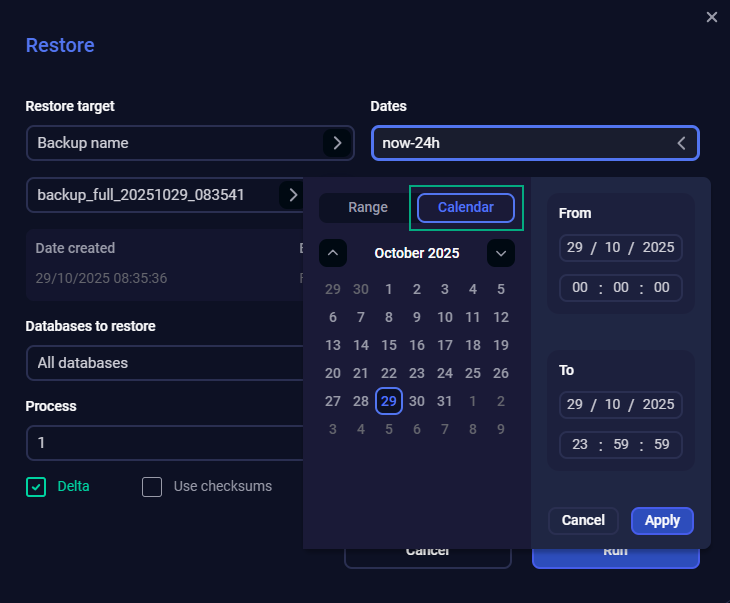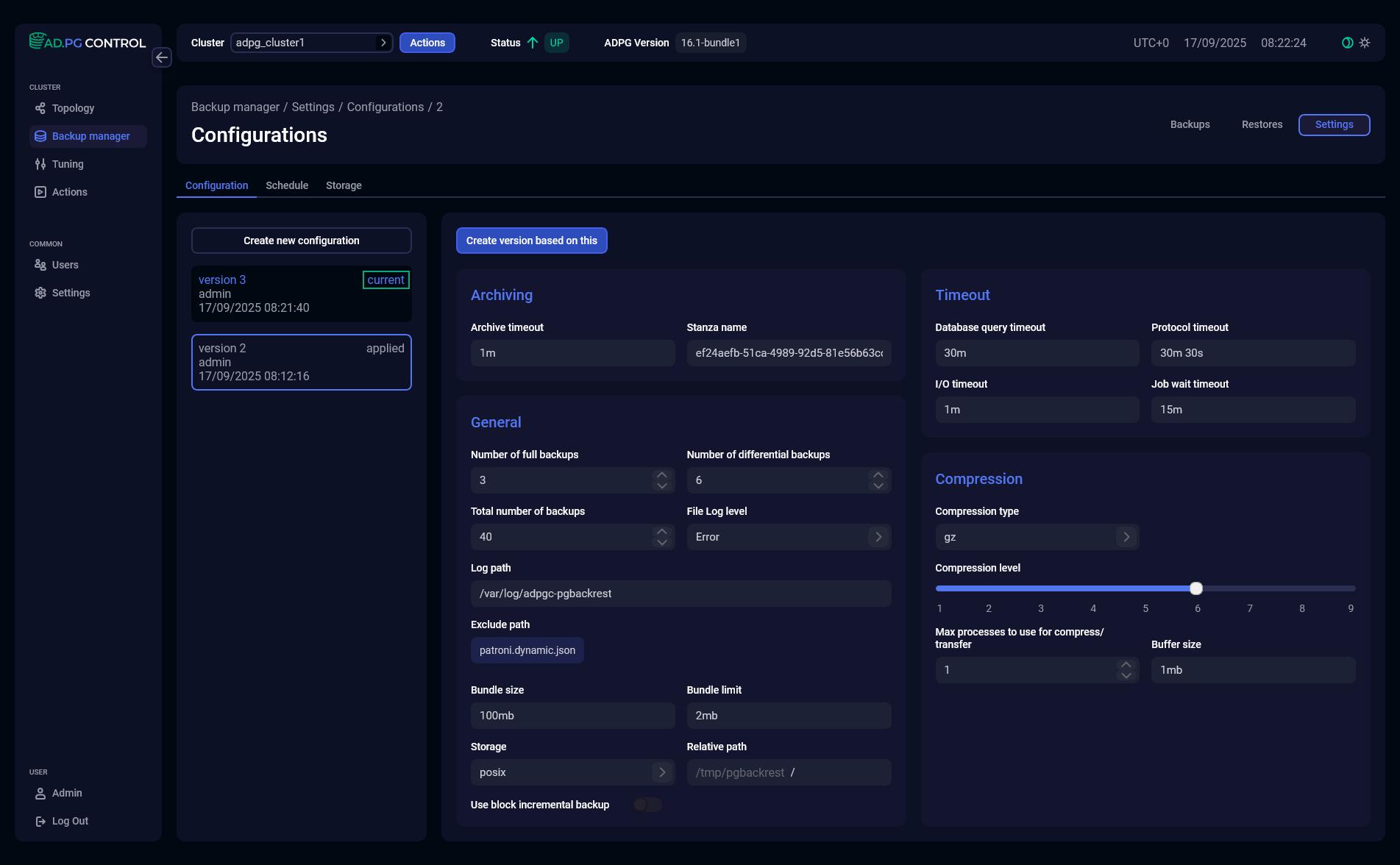

Run actions
After you define a configuration and specify a schedule for backups, they will be created automatically according to your settings. However, you can manage backups manually via the Backup manager actions described below.
To run the actions, click Actions at the top of the Backup manager page and select the required action. The action will be executed for the cluster selected from the Cluster combo box next to Actions.

The following actions are available:
Backup
The Backup action allows you to create a backup. Backups are produced on the leader. To run the action, click Backup in the action list on the Backup manager page.
The window that opens contains the following fields:
-
Type — a backup type. Possible values are:
Full— full,Incr— incremental,Diff— differential. -
Date created — a current timestamp. Non-editable field.
-
Configuration — the current configuration version that will be used. You can click the version name to open the Configuration tab, where you can check or edit the configuration parameters. Non-editable field.
Set field values according to your requirements and click Run.

The created backups are displayed on the Backups tab of the Backup manager page.

Restore
The Restore action allows you to restore databases on all cluster nodes. Click Restore in the action list on the Backup manager page to run the action. The action window will be opened.

The Restore window contains the following fields:
-
Restore target — determines how the recovery should be performed. Currently, only the restore from a backup is supported. It corresponds to the
Backup namevalue. Below this field, a combo box with available backups is displayed. It allows you to select the backup from which you want to restore. Clickto show detailed information on the selected backup:
-
Date created — a creation timestamp.
-
Backup type — a backup type. Possible values are:
Full— full,Incr— incremental,Diff— differential. -
Configuration — the configuration version that was used. You can click the version name to open the Configuration tab with specified parameters.
-
-
Dates — a time period for which the list of backups will be available in the combo box. You can select this period as a range (by default) or use a calendar to specify it.
 Select a range
Select a rangeTo select a period in the
from <date> to <date>format, click Calendar. Select a period in the calendar
Select a period in the calendar -
Databases to restore — the databases to restore from the selected backup. Currently, it is not possible to restore the
postgresdatabase if it is the single database in the backup. This generates an error before the action is run. -
Process — the maximum number of concurrent
pgbackrestprocesses decompressing and moving files that are used during a restore operation. -
Delta — a flag that indicates whether to restore only the files that have changes from the existing files in the PostgreSQL data directory. This option can significantly speed up the restore process. If Delta is not set, all files in the data directory will be removed before the restore operation.
-
Use checksums — a flag that indicates whether to utilize checksums instead of timestamps to determine if a file should be replaced with its updated version from a backup. Using checksums is safer, but may slow down the recovery operation for large files. The Use checksums flag is available if Delta is checked.
After you set the field values, click Run to execute the Restore action.
The performed restores are displayed on the Restores tab of the Backup manager page.

|
NOTE
Currently, for the Restore action to run without errors, the cluster should contain databases with names other than the default database name — postgres.
|
Apply backup config
The Apply backup config action opens the Configuration sub-tab of the Backup manager → Settings tab. On this tab, the applied backup configuration is marked as current.

You can create a new configuration on this tab. ADPG Control automatically applies this new configuration after you save it.